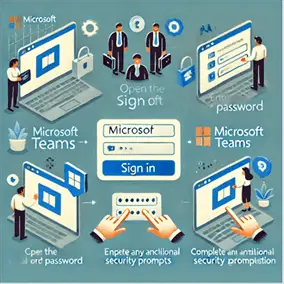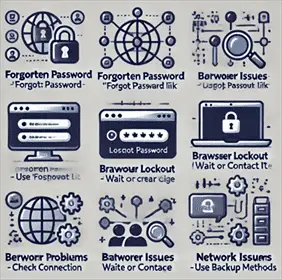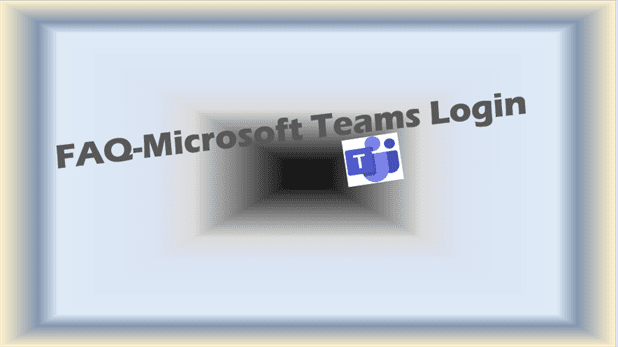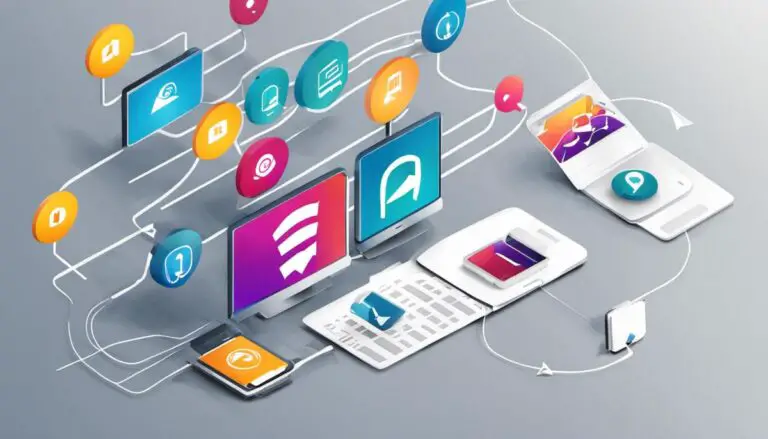Microsoft Teams Log in: The Ultimate Guide
Introduction – Microsoft Teams Log in
In today’s fast-paced digital workplace, efficient collaboration tools are essential for productivity and seamless communication. Microsoft Teams has emerged as a powerhouse in this arena, offering a comprehensive platform for chat, video conferencing, file sharing, and much more. However, to harness the full potential of this robust tool, users must first master the fundamental step: logging in. This guide will walk you through everything you need to know about Microsoft Teams log in, from basic access to advanced features and troubleshooting tips.
What is Microsoft Teams?
Microsoft Teams is a collaborative workspace within Microsoft 365 that integrates people, content, and tools to enhance productivity and streamline workflows. It serves as a central hub for teamwork, offering features such as:
- Chat and messaging
- Video and audio calling
- File sharing and collaboration
- Meeting scheduling and management
- App integration
- Team collaboration spaces
Before diving into the log in process, it’s crucial to understand the value that Microsoft Teams brings to your organization.
How to Log in to Microsoft Teams

Logging in to Microsoft Teams is a straightforward process, but it’s essential to follow the correct steps to ensure secure access to your account. Here’s a step-by-step guide:
- Go to the official Microsoft Teams website (teams.microsoft.com) or open the Microsoft Teams app on your device.
- Click on the “Sign In” button.
- Enter your Microsoft account credentials (email and password) associated with your Teams account.
- If you’re using a work or school account, you may be redirected to your organization’s sign-in page.
- Follow any additional security prompts, such as multi-factor authentication, if enabled.
- Once logged in, you’ll have access to your Teams dashboard and all associated features.
Microsoft Teams Log in Methods
Microsoft Teams offers various log in methods to cater to different user needs and security requirements. Let’s explore these options:
1. Web Browser Log in
The web browser method is the most accessible way to log in to Microsoft Teams. It supports the following browsers:
- Microsoft Edge (latest version)
- Google Chrome (latest version)
- Firefox (latest version)
- Safari (latest version)
To log in via a web browser:
- Navigate to teams.microsoft.com
- Click “Sign in”
- Enter your credentials
- Access Teams directly in your browser
2. Desktop Application Log in
For a more robust experience, many users prefer the desktop application:
- Download the Microsoft Teams desktop app from the official Microsoft website
- Install the application on your computer (Windows or Mac)
- Open the app and click “Sign in”
- Enter your Microsoft account credentials
- Enjoy a fully-featured Teams experience
3. Mobile App Log in
For on-the-go access, the mobile app is invaluable:
- Download the Microsoft Teams app from your device’s app store (iOS or Android)
- Open the app and tap “Sign in”
- Enter your Microsoft account email and password
- Use biometric authentication (if available) for quicker future access
4. Single Sign-On (SSO)
Many organizations use Single Sign-On for a seamless experience across multiple applications:
- Click “Sign in” on the Teams login page
- Enter your work email address
- You’ll be redirected to your organization’s SSO page
- Enter your SSO credentials
- You’ll be automatically logged into Teams and other connected applications

Troubleshooting Microsoft Teams Log in Issues
Even with a straightforward login process, users may occasionally encounter issues. Here are some common problems and their solutions:

- Forgotten Password
- Use the “Forgot password” link on the login page
- Follow the prompts to reset your password
- Contact your IT department if you need additional assistance
- Account Lockout
- Wait for the specified lockout period to end
- Contact your IT department to unlock your account
- Ensure you’re using the correct credentials
- Browser Compatibility Issues
- Update your browser to the latest version
- Clear browser cache and cookies
- Try using a different supported browser
- Network Connectivity Problems
- Check your internet connection
- Disable VPN temporarily if you’re using one
- Contact your IT department if the issue persists
- Multi-Factor Authentication (MFA) Issues
- Ensure your MFA device is working correctly
- Use backup MFA methods if available
- Contact your IT department for MFA resets
Security and Privacy for Microsoft Teams Log in
Microsoft Teams takes security and privacy seriously, especially during the log in process. Here are some key features:
- End-to-End Encryption: All data transmitted during login is encrypted.
- Multi-Factor Authentication: Adds an extra layer of security to your account.
- Conditional Access: Allows organizations to set specific conditions for access.
- Single Sign-On (SSO): Reduces the number of passwords users need to remember.
- Azure Active Directory Integration: Provides robust identity management.
To enhance your Microsoft Teams log in security:
- Use a strong, unique password
- Enable multi-factor authentication
- Avoid logging in on public or shared computers
- Keep your device’s operating system and anti-virus software up to date
- Be cautious of phishing attempts and only log in through official Microsoft pages
Microsoft Teams Log in for Different Devices
Microsoft Teams supports a wide range of devices. Here’s a quick guide for logging in on various platforms:
| Device Type | Log in Steps | Supported Versions |
|---|---|---|
| Windows PC | 1. Open desktop app or web browser 2. Click “Sign in” 3. Enter Microsoft account credentials | Windows 10 or later |
| Mac | 1. Open desktop app or web browser 2. Click “Sign in” 3. Enter Microsoft account credentials | macOS 10.12 or later |
| iOS | 1. Open Teams mobile app 2. Tap “Sign in” 3. Enter Microsoft account credentials | iOS 12.0 or later |
| Android | 1. Open Teams mobile app 2. Tap “Sign in” 3. Enter Microsoft account credentials | Android 7.0 or later |
| Linux | 1. Open web browser 2. Go to teams.microsoft.com 3. Click “Sign in” 4. Enter Microsoft account credentials | Most distributions |
| Web Browser | 1. Navigate to teams.microsoft.com 2. Click “Sign in” 3. Enter Microsoft account credentials | Latest versions of Edge, Chrome, Firefox, Safari |
Advanced Features After Logging in to Microsoft Teams
Once you’ve successfully logged in to Microsoft Teams, a world of collaborative features awaits you:
- Team Creation and Management
- Create teams for departments, projects, or interest groups
- Manage team settings and permissions
- Add or remove team members
- Channel Communication
- Use channels for focused discussions
- Pin important messages for easy access
- Use @mentions to get someone’s attention
- File Sharing and Collaboration
- Share files directly in chats or channels
- Co-author documents in real-time
- Use version history for file recovery
- Meeting Scheduling and Attendance
- Schedule meetings directly from Teams
- Join meetings with one click
- Use breakout rooms for smaller group discussions
- App Integration
- Add apps to enhance your Teams experience
- Use Microsoft 365 apps within Teams
- Integrate third-party tools for extended functionality
- Advanced Calling Features
- Make voice and video calls
- Use background blur or custom backgrounds
- Enable live captions and transcriptions
- Task Management
- Create and assign tasks to team members
- Track task progress and deadlines
- Integrate with Microsoft Planner for more robust project management
Microsoft Teams Log in for Different User Types
Different types of users may have slightly different log in experiences:
Business Users
- Typically use work email for login
- May have SSO enabled
- Often have stricter security policies
Educational Users
- Use school-provided email for login
- May have different features enabled/disabled by administrators
- Often have integration with educational tools
Personal Users
- Can use personal Microsoft account
- Have access to a subset of Teams features
- Can join meetings as guests without a full account
Guest Users
- Can be invited to specific teams or meetings
- Have limited access compared to full members
- May need to create a Microsoft account to access some features
Frequently Asked Questions about Microsoft Teams Log in
- Q: How do I sign in to Microsoft Teams? A: Go to teams.microsoft.com or open the Teams app, click “Sign In,” and enter your Microsoft account credentials.
- Q: Can I use Microsoft Teams without logging in? A: You can join Teams meetings as a guest without logging in, but for full functionality, you need to sign in.
- Q: Why can’t I log in to Microsoft Teams? A: Common issues include incorrect credentials, network problems, or account lockouts. Try the troubleshooting steps mentioned earlier in this article.
- Q: How do I log in to Microsoft Teams on the web? A: Navigate to teams.microsoft.com in your web browser and follow the sign-in prompts.
- Q: Is there a difference between Microsoft Teams log in and sign in? A: No, “log in” and “sign in” are used interchangeably and refer to the same process of accessing your Teams account.
Conclusion
Mastering the Microsoft Teams log in process is your gateway to a powerful collaboration platform. By understanding the various login methods, troubleshooting common issues, and prioritizing security, you can ensure a smooth and productive experience with Microsoft Teams. Remember, whether you’re accessing Teams via the web, desktop app, or mobile device, the fundamental steps remain the same: provide your credentials, navigate any security measures, and dive into a world of enhanced teamwork and communication.
As Microsoft continues to evolve Teams with new features and improvements, staying informed about the login process and best practices will help you make the most of this versatile tool. So log in, collaborate, and watch your productivity soar with Microsoft Teams!
Related Posts:
- Microsoft Teams Web app
- How to improve MS Teams performance on Windows PC?
- Microsoft Teams Installer: Simplifying Remote Work
More Reading:






